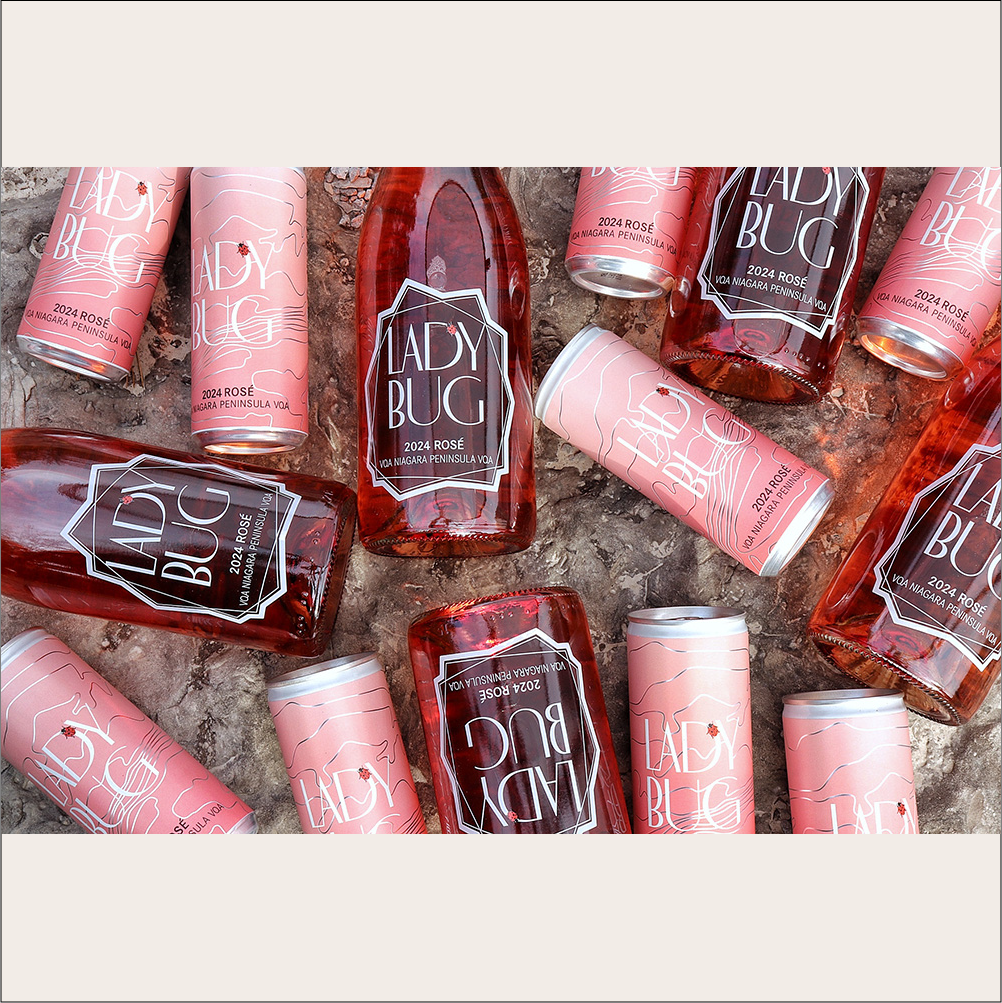The Hatching of a Trademark
Our vineyards have begun to transform with the arrival of another spring. Freshly trimmed vines give evidence that water is again pulsing from their roots. As other life returns, there’s one special harbinger of spring we look forward to seeing again. It’s the tiny red ladybug, whose image has quietly hovered over the logo on our wines since they first appeared.
The inspiration that led to the ladybug’s adoption as a trademark of Malivoire Wine did not come from the screen of an artist. It began when a young girl, the daughter of our first Winemaker, was present for a demonstration of our first Rosé. Perhaps inspired by the Rosé’s bright red hue, she wished it could be called “Ladybug”. Also present, and intrigued by the youngster’s imagination, winery founder Martin Malivoire hand-sketched an outline of a ladybug and saw there the makings of a trademark.
There were many things to like. The ladybug would be an attractive and appealing image, being almost universally regarded as a “good” insect. Moreover, the new company had already committed to environmental guardianship. The ladybug, as a beneficial member of the natural environment, would represent this simply, with a hint of whimsy that seemed appropriate for a quality-of-life entity like a winery.
The very first Ladybug Rosé, from the 1998 vintage, appeared the following year. By that time the ladybug trademark, professionally reproduced, had been fully adopted.

The ladybug our trademark embraced was, and is, the friendly red-and-black variety, native to Canada. This is important to point out, because only a couple of years later, the beetle’s friendly reputation was bruised by the arrival of an unfriendly newcomer. Threatened by crop damage from aphids, soybean growers, mostly in the southeastern United States, had been importing and releasing “Multicoloured Asian Lady Beetles” (or MALBs) since the early 1900s.
Distinguishable by their orange colour (unlike the red native species) and valued for their voracious appetite, they were rarely seen in Canada until 2001, when they followed a migrating aphid population into Southern Ontario. Here, they became especially troublesome in vineyards, because their secretion of methoxypyrazines, even in small amounts, was highly detrimental to the flavour of grapes and, by extension, wine.
So negative was the public reaction to ladybugs in general that we, at the urging of the LCBO, removed the Ladybug name and image from our by-now iconic Rosé, which went on sale under a generic Malivoire label.
Fortunately, the alarm was short-lived. Grape growers and winemakers learned how to reduce MALB’s impact, and within a year, Ladybug Rosé was Ladybug again. Over time, the orange ladybug became a faded, sour memory.
Today, the native red ladybug still adorns all Malivoire wines, and is proudly seen at the winery’s street entrance, at many stations inside the building, on our correspondence, and many other places. Its continual presence is a reminder of Malivoire’s abiding commitment to the environmentally sustainable practices, and the quality of what we make.






